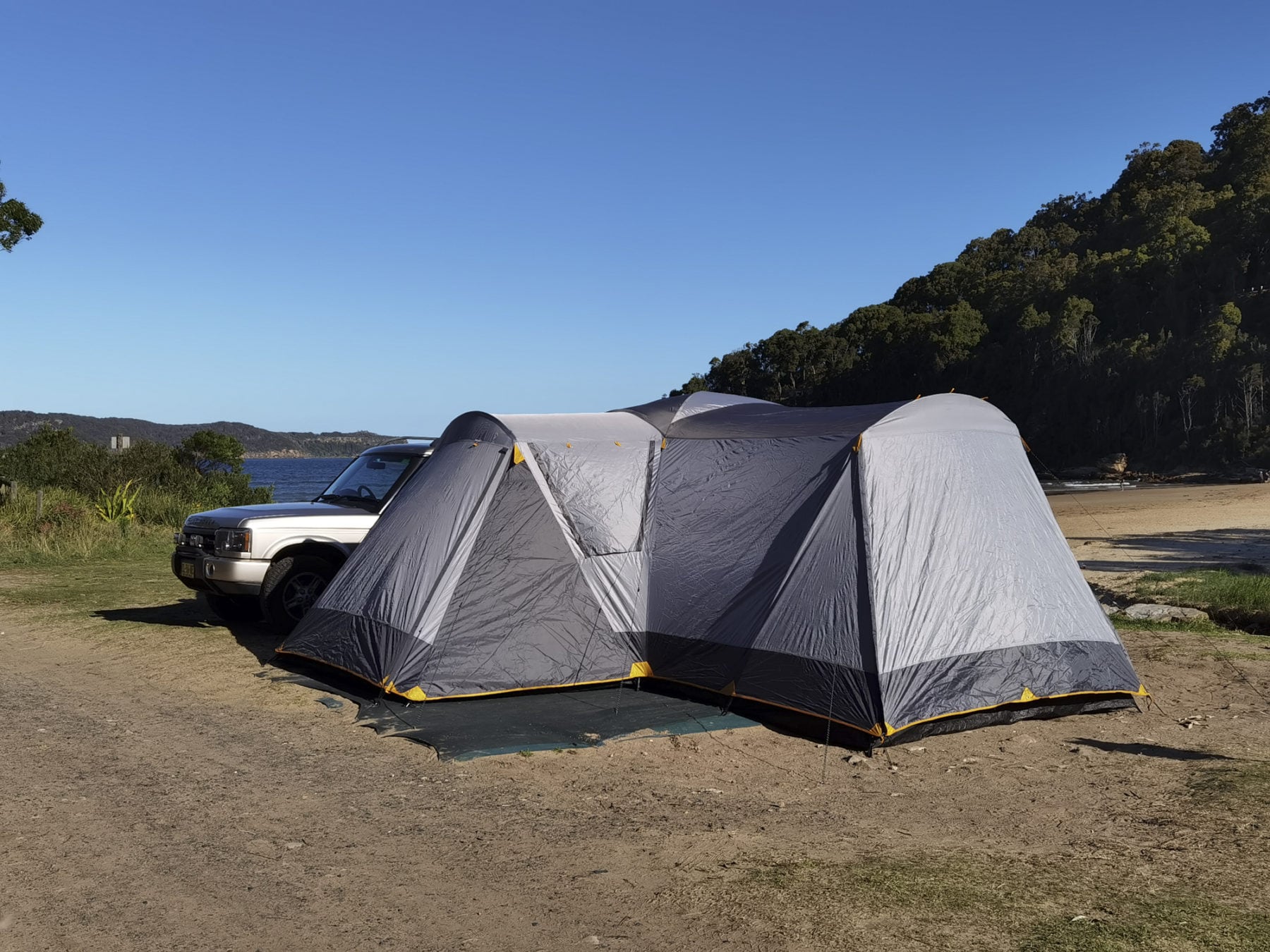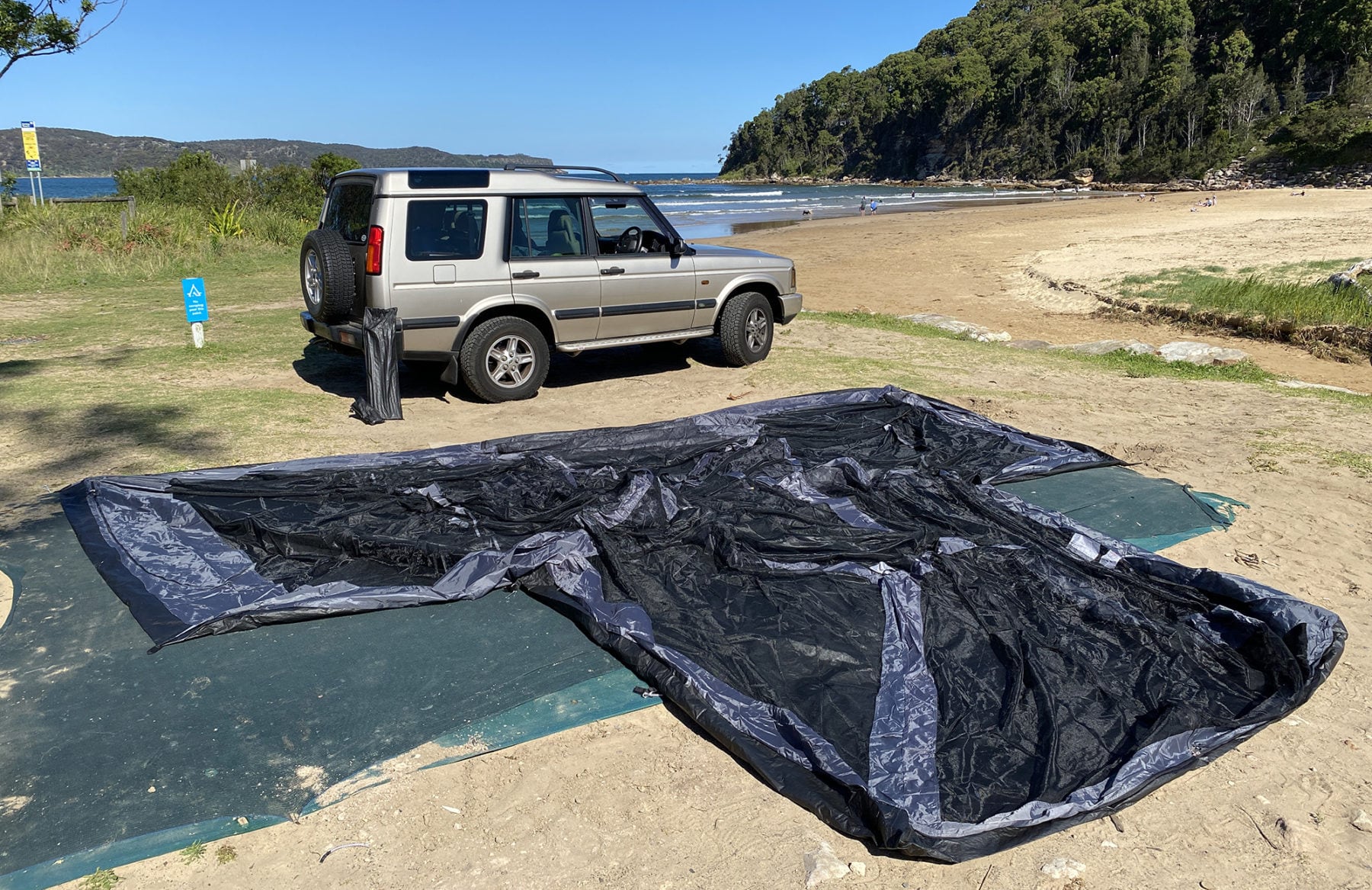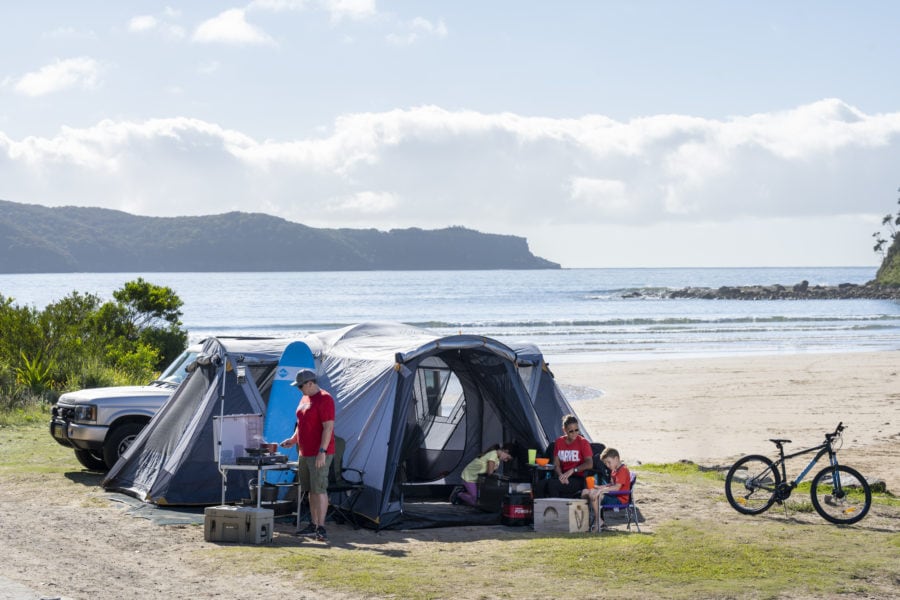The family tent is ubiquitous with camping trips. A portable home away from home, a family tent is usually the first introduction to camping for most of us. The family tent is the workhorse of the camping world and has to perform multiple duties reliably. Providing a place to sleep at night, a shelter if it rains, offer enough interior space so everyone is not on top of each other, and to easily set up and packed down each night. It will, no doubt, also be called on to not only shelter one family, but often a few extras, including your kids’ mates – upping your family size from four or five to seven or more – or even a sibling’s entire family. The Oztrail Genesis Apex 12P is the latest from the well-known camping brand, and this big-bopper is aimed squarely at meeting all those demands mentioned here.
Design
Let’s get this out of the way first: the Oztrail Genesis Apex 12P is big. (Duh! I hear you say). However, the designers have been clever in how they have approached the problem of fitting 12 folks in a tent by utilising an interconnected room design, with three separate bedrooms pivoting off an open area at the tent’s centre. By doing this, it means the tent footprint is relatively compact for its capacity, masking its actual size well.
The inner tent is primarily No-Seeum mesh, with a heavy-duty seam-sealed polyethylene floor to cope with the expected foot traffic from a family, plus it will keep water out, thanks to its bucket-floor design. The outer fabric is 68-denier (D) silver-coated polyester with a UVTex treatment to protect against water ingress and UV rays.
The tent outer includes a number of insect-mesh windows to aid ventilation, along with huge roll-down flaps covering the exterior zip entrance to all three bedrooms, allowing you to roll these up for maximum cross-flow ventilation. The outer fly has numerous guy-lines that, when tied down, work in combo with the fly’s Velcro tabs that secure to the poles to provide a very stable tent in wind – impressive, considering its tall profile.

The tent poles are a mix of reinforced fiberglass for the main poles that cross over and through sleeves to create the tent’s ‘shape’, and steel for the portico poles that create near-vertical walls for additional space. Each room measures 2400mm wide x 2100mm deep and the tent has great headspace as well; two testers are over 185cm tall and had no problems thanks to the 2.2m roof height. Each room is also partitioned by a zipped nylon door, to provide privacy. A nifty feature that just adds to an overall clever design.
The Oztrail Genesis Apex 12P in the field
When I first laid out the inner tent of the Oztrail Genesis Apex 12P, I realised just how big this thing is – it dwarfed my Land Rover Discovery 4WD – but I was pleasantly surprised at how its overall footprint wasn’t too excessive, measuring 6m by 5.2m. That meant it still fit on a standard tent site. That, and the relatively compact packed size (800mm x 320mm x 320mm) and weight (20kg), bely its capacity.
The time to set this tent up, initially, was around 35 minutes, but after a few cracks at it, I got it down to around 20, which means for this tester it passes the one-night-only rule. In other words, setting up the tent is not so arduous that you’d be hesitant to take it for a single night’s camp.

The set-up is straightforward; after pegging the base down, the fiberglass cross-poles are fed through the middle and then the steel portico poles are attached via a clamp setup that features a fiberglass pole in the middle, effectively helping brace the side-wall of the tent when they’re all connected. It is the use of fiberglass poles for the main cross-poles and for the awning sections that is a slight bummer – using more robust aluminium poles (albeit at a weight penalty) would be great but that may lift cost and also add overall weight.
Fitting the outer fly to the inner is also straightforward, thanks to colour-coded tabs (match the yellow outer fly tabs with the inner’s front tabs of the same colour, and away you go). It is, however, easier as a two-person job – especially in windy conditions – as the fly is immense. Once it is all clipped down and the Velcro tabs on the inside of the outer fly are attached to the poles, you’re pretty much done.
The number of windows and doors in the outer is excellent not only for ventilation, but also for letting in plenty of natural light. Backing that up at night are some handy light hooks, plus power-cord outlets. Setting up the tent for a family of four was great thanks to those three rooms and the dividers. Kids at one end, parents in the other, and the front room was used as the entry and where we kept the Oztrail fridge/freezer and its power-pack. We copped no rain during testing but with that robust floor and the area available inside, you could easily move camp chairs and/or a small camp table in if need be, without feeling cramped.
As mentioned earlier, the NoSeeum mesh inner tent means oodles of ventilation – especially handy during our long hot summers – but it is something to be aware of if you’re keen on camping somewhere colder. During testing we had one chilly night, with a strong cold wind accompanying it and I did feel quite chilled in the tent. I should also add that I was the only occupant on this night, so that is a lot of ‘dead’ space to try and keep warm, but it was definitely chilly – even with all windows and doors closed. With more occupants it would not have been as cold inside with the combined body-heat.
A side-note on the cold and windy night of testing was that the strong wind provided the perfect test of the tent’s stability and, with all the guy-lines pegged down properly, it barely budged. This was very impressive, especially considering how tall/wide the thing is.
The final word on the Oztrail Genesis Apex 12P
The Oztrail Genesis Apex 12P is a huge tent, and you could be forgiven for thinking “Why?” in terms of its size. But, as mentioned earlier, start adding a few people to your camping trip away and it soon makes sense. Add in the versatility of the floorplan, stability in windy conditions and ventilation and it does even more so. The fact Oztrail has designed a ‘big’ tent that sits ‘small’ on a campsite (and when packed up in its bag) is worthy of kudos, too. Of course, it may still be too big for some – and all that ventilation means we’d recommend it as a three-season-only shelter (for Aussie conditions, this covers most of the year, unless you spend time camping in alpine regions over winter). Overall, though, the Oztrail Genesis Apex 12P presents as a cleverly designed and versatile shelter option for large (or extended) families, as well as smaller families who simply like plenty of room – and it does so at a competitive price.
RRP: $1000 Available at Anaconda stores
